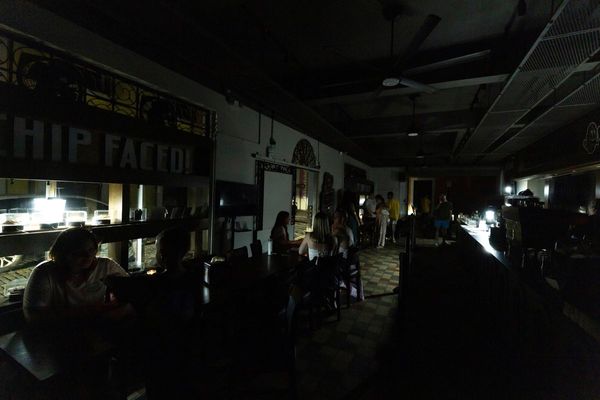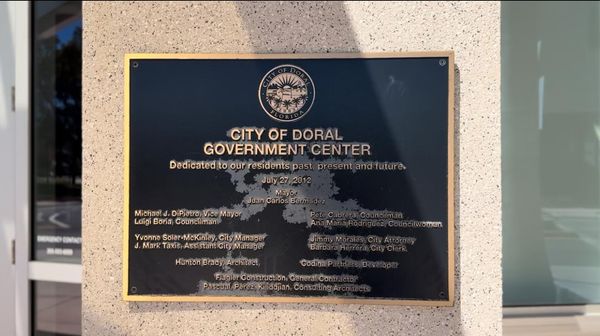For the second time in two months, Republican presidential candidate Donald Trump survived an assassination attempt – raising further concerns about the future of peaceful democracy and a potential return to a more violent era of American politics.
It also pushed one clear political question to the forefront: could the attempt on Trump’s life breathe life into his campaign?
When he was shot at in July at an outdoor rally in Pennsylvania, dramatic photos emerged of a defiant and bloodied Trump surviving the attack. The incident led to a small increase in his standing in the polls.
Trump’s favourability ratings (a measure of what proportion of the electorate have a favourable impression of the candidate) and polling lead over his then opponent and current president, Joe Biden, both went up over the following days, by about 1–2 percentage points on average. These are fairly minimal effects but in a razor-thin election, these margins could prove decisive.
Prior to the first attack, Trump had struggled to achieve a favourability rating or projected vote of over 43%. However, he has consistently been above that mark in both measures since the attack. It seems the first attempt on his life provided small but persistent gains to his candidacy.
A further 1-2 percentage point increase for Trump after the foiled second attack, at his golf course in West Palm Beach, Florida, on September 15, would give him fresh gains and potentially flip key battleground states that would hand him victory. But should we expect to see this additional bump as polls following the second assassination attempt come out? Probably not.
Moments like this occur in the context of other events and campaign activities. And the political narrative around this second attempt on Trump’s life feels very different from the first.
When would-be assassin Thomas Matthew Crooks fired at Trump in July, the former president was on the rise politically. He had just emphatically won a televised debate against Biden, emerging from it as the more energetic and youthful-looking candidate.
Polls were swinging in Trump’s favour. In fact, just prior to that assassination attempt, it seemed he had taken a clear – if not unassailable – lead in national polling. The battleground states were all trending towards him.
Any post-assassination bump was swept up with these influences as well. Voters viewed Trump as the probable next president, and understood that attack through the lens of a dramatic photograph of Trump pumping his fist boldly while draped in secret service agents. He was a candidate on the rise, defeating sitting presidents in debates and thwarting a gunman without fear.
But, just a week later, Biden left the race and his vice-president, Kamala Harris, replaced him as the presumptive Democratic nominee. Harris’s entry into the race reshaped the contest and altered the trajectory of both campaigns.
Polls started trending towards her and she soon captured a slight lead in national polling, as well as higher favourability ratings than Trump. The momentum reversed and Harris brought the contest into an even balance, even gaining narrow advantages in battleground states.
Then, on September 10, it was Trump’s turn to lose a televised debate. Harris emerged looking calmer, cooler and more presidential than the rambling and angry Trump. He retreated to his resort in Florida, presumably to lick his wounds and regroup.
When news of the second assassination attempt broke, there were no dramatic photos or heroic images. News anchors instead reported that Trump had decided to play golf at his country club and the potential shooter, who had been lying in wait for almost 12 hours, had been spotted because the barrel of his rifle was sticking out of a bush.
The suspect was scared off without firing a shot after agents opened fire on him. And Trump himself was whisked away to safety, apparently complaining: “I would have liked to sink that last putt.”
The optics of the two assassination attempts present far different portraits of the former president. The first, where bullets narrowly missed killing him while he rallied thousands of supporters, presented an active and energetic image of a candidate who was on the rise and triumphant in bravely surviving the ordeal.
The second presented a passive image of a candidate out for a leisurely round of golf after being trounced by his ascendant rival, saved by an agent who noticed a potential shooter hiding in a hedge.
There is no real glory or triumph in that image, nor a compelling story to garner support. So, it is highly unlikely this second attempt will produce the rush of sympathy or support that the first did.
David Andersen does not work for, consult, own shares in or receive funding from any company or organisation that would benefit from this article, and has disclosed no relevant affiliations beyond their academic appointment.
This article was originally published on The Conversation. Read the original article.







